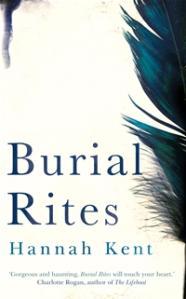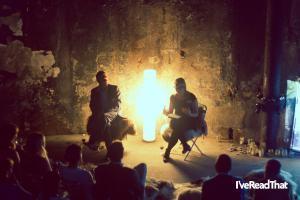 Being in the very final stages of my re-write, I wasn’t planning to post any more book reviews until I finish the manuscript, but sometimes with resolutions you just have to make an exception. Hannah Kent’s debut novel Burial Rites is without question one of the best novels I’ve read this year and is justly attracting a lot of attention. Just as its 28 year-old Australian author arrived in the UK for its release here, it was longlisted for the Guardian First Book Award. Hannah Kent has also spoken about the book this week on BBC Radio 2 Book Club.
Being in the very final stages of my re-write, I wasn’t planning to post any more book reviews until I finish the manuscript, but sometimes with resolutions you just have to make an exception. Hannah Kent’s debut novel Burial Rites is without question one of the best novels I’ve read this year and is justly attracting a lot of attention. Just as its 28 year-old Australian author arrived in the UK for its release here, it was longlisted for the Guardian First Book Award. Hannah Kent has also spoken about the book this week on BBC Radio 2 Book Club.
It’s not unusual for there to be a ‘story behind the story’, but Burial Rites has two. It is based very closely on an actual historical event, namely the last execution to take place in Iceland, in 1829. The tale of how Hannah Kent came to write the book is equally fascinating and everyone present at the extraordinary launch organised by her publishers, Picador, was fortunate to hear both. Deep underground and in near darkness, we were some of the first to set foot in the Rotherhithe Shaft in 150 years. It was the most fitting and atmospheric place imaginable for this event.

Each of the thirteen chapters begins with a piece of testimony, official or private correspondence which build up a picture of the justice system when the island was still under Danish rule and of the prevailing social and religious mores. Pending her execution, Agnes is sent to live in northwest Iceland with the district officer, his wife and two daughters, all of whom are terrified and disgusted to share their roof with her. Tóti, the inexperienced young priest Agnes chose as her appointed spiritual guide, shows her compassion but is deeply intimidated by the responsibility placed on him. Crucially – and this is what the book adds to the known facts – he is interested in her side of the story when nobody else has yet thought to question the official version.
These lines are from the first section in Agnes’s own voice, when she is still imprisoned in a dark room before being moved to the family home:
Perhaps it is already summer [...] I know that the weather has eased, that the wind has lost its teeth. And I close my eyes and I imagine the valley in the long days of summer, the sun warming the bones of the earth until the swans flock to the lake, and the clouds lifting to reveal the height of the sky: bright, bright blue, so bright you could weep.
This, like many other parts I could have chosen, illustrates the way Burial Rites as a work of fiction transcends the utter bleakness of the story which inspired it. This is a novel of rich description: of the harshness of the climate and the landscape, the cruelty of poverty and fate (Agnes is a pauper and a bastard) and the horrors human beings inflict on each other. The prose is outstanding: honest, unflinching and multi-sensory. To write this beautifully on a dark subject is the mark of great skill in any author, let alone one still so young.
I found it very interesting to see where the tension would reside in a story where the outcome is already known (it’s openly mentioned in interviews, publicity, etc). The answer lies in the strength of the characterisation. In any good novel, the characters find themselves in a different place at the end – never more so than in Burial Rites, where Agnes is living out the last months of her life. The interaction between the characters is tense and very involving, with clever use of viewpoints: the mostly third person narrative feels at times quite externalised, and in other places deep within the heads of Márgrét, the mistress of the house, and priest Tóti.
As you would expect, the most powerful account is Agnes’s own. These are her thoughts, fears and memories, some of which will be shared with others in the story, many remaining unspoken to the end. When this is well done, there is something powerful and intimate about the reader having access to the protagonist’s unfiltered voice and feelings.
In a novel where back story plays such a key part, this was skilfully woven in with the present story and the suspense increased as various circumstances came to light. As Hannah explained, a huge amount of research and several return trips to Iceland went into writing this novel, but it would not have such emotional impact without her exceptional ability to imagine and evoke interior lives.
Sometimes, after talking to the Reverend, my mouth aches. My tongue feels so tired; it slumps in my mouth like a dead bird, all damp feathers, in between the stones of my teeth. What did I say to him? What did the others make of what I said? It doesn’t matter. No one could understand what it was like to know Nathan. In those early visits it was as though we were building something sacred.

And I always know when I’m reading something I’ll never forget.
*POSTSCRIPT*
Don’t miss the wonderful guest post from earlier this week by another writer of historical fiction who’s set her novel in a foreign land, Wendy Wallace.
Next week – my second blog anniversary competition. Watch this space for the return of the LITERARY LUNCH…

